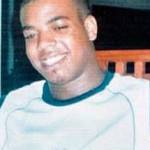 When we look at the figures of young African Americans shot dead, some might comfort themselves with the mantra ‘thank goodness our police forces, unlike those of the US, are not routinely armed’.
When we look at the figures of young African Americans shot dead, some might comfort themselves with the mantra ‘thank goodness our police forces, unlike those of the US, are not routinely armed’.
But look at our record of BAME killings when they are armed. In just the last few years, Azelle Rodney was shot eight times on sight by a veteran police marksman in 2005; Mark Duggan was shot dead in a Tottenham street in 2011 and Jean Charles de Menezes was mistaken for a terrorist and shot at point blank range in an underground carriage in 2005.
 The point here is not to compare levels of police violence in the UK and US or numbers of deaths, but to compare the perennial defence: the policeman involved in a controversial black shooting used proportionate force because he was of the view (perhaps based on intelligence that could be right or wrong) that the deceased was definitely armed, was about to shoot, posed a danger to him and to others. Of 509 cases of suspicious BAME deaths in custody in the last twenty-three years, 137 involving the police and force of some sort used in thirty-nine, there has been precisely one prosecution for murder – the case of Azelle Rodney. And despite the fact that an inquiry under a high court judge (in lieu of an inquest) had found no lawful justification for Rodney’s death, the policeman was cleared by a jury last Friday on the basis that he fired in self defence. He did not see a gun but intelligence had convinced him that he and other officers were about to be sprayed with ‘up to a thousand rounds’. The armed officer who shot Duggan dead (following a police hard stop) claimed he fired in self defence and described a gun that he saw raised to shoot him. Though a gun was found later on waste ground next to
The point here is not to compare levels of police violence in the UK and US or numbers of deaths, but to compare the perennial defence: the policeman involved in a controversial black shooting used proportionate force because he was of the view (perhaps based on intelligence that could be right or wrong) that the deceased was definitely armed, was about to shoot, posed a danger to him and to others. Of 509 cases of suspicious BAME deaths in custody in the last twenty-three years, 137 involving the police and force of some sort used in thirty-nine, there has been precisely one prosecution for murder – the case of Azelle Rodney. And despite the fact that an inquiry under a high court judge (in lieu of an inquest) had found no lawful justification for Rodney’s death, the policeman was cleared by a jury last Friday on the basis that he fired in self defence. He did not see a gun but intelligence had convinced him that he and other officers were about to be sprayed with ‘up to a thousand rounds’. The armed officer who shot Duggan dead (following a police hard stop) claimed he fired in self defence and described a gun that he saw raised to shoot him. Though a gun was found later on waste ground next to 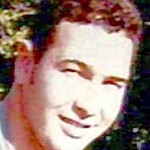 the place of the killing, witnesses say Duggan had his hands in the air when shot. And no one other than the armed officer saw Duggan holding a gun.
the place of the killing, witnesses say Duggan had his hands in the air when shot. And no one other than the armed officer saw Duggan holding a gun.
Police shootings in the UK are, thankfully, rare. But the defence by our agents of law and order, that their recourse to force is prompted by a genuinely held fear that their lives are in danger from black people who are disproportionately strong, large, out of control, angry and/or likely to be armed, is, far from being rare, a stock one. Joy Gardner (who died through asphyxiation during a physically vigorous deportation attempt in 1993) was supposedly ‘violent’, ‘raging’ and a potential killer. Roger Sylvester (who died in 1999 after being restrained by police) had ‘exceptional strength’.
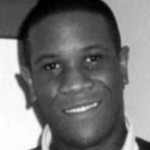
And such stereotypes of black and other ethnic minority people are being used right across Europe to justify fears. The officer in Germany who shot dead Christy Schwundeck, of Nigerian descent, in 2012 at Frankfurt-am-Maine said he fired because ‘she had a completely crazy look, full of aggression, hate and rage an expression that was frightening for me …’ She was in fact suffering from depression and had just had her social benefit withheld. And just six years earlier the German police in Dortmund had justified their shooting dead of Congolese Dominique Koumadio on the same basis: he had acted with extreme rage. And, in the Netherlands, the police prosecutor told the press after the death in custody of Aruban tourist Mitch Henriquez on 28 June (which provoked days of public unrest in the Hague) that violence was used ‘because he resisted’ and Henriquez said he had a weapon – a version of events contested by those who witnessed the arrest.
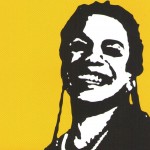
 Stereotypes about foreigners, particularly dark-skinned ones – that they are unpredictable, capable of extraordinary strength, exhibit bizarre behaviour, may be involved in drugs, guns and other violent crimes – run very deep. They perhaps explain why psychologically disturbed or distressed BAME people who need medical and psychiatric help or simply to be incapacitated in some way, end up instead on mortuary slabs.
Stereotypes about foreigners, particularly dark-skinned ones – that they are unpredictable, capable of extraordinary strength, exhibit bizarre behaviour, may be involved in drugs, guns and other violent crimes – run very deep. They perhaps explain why psychologically disturbed or distressed BAME people who need medical and psychiatric help or simply to be incapacitated in some way, end up instead on mortuary slabs.
As criminologist Eddie Bruce-Jones has pointed out,[1] the fact that prosecutions of officers are so rare (and convictions nigh impossible) rests on the fact that fear is a subjective response. How can one refute that someone is afraid, how can authorities assess the credibility of an alleged threat, especially when the deceased cannot testify? The failure to prosecute legitimises the police’s assessments of the proportionality of their actions, based mainly on their own account of events.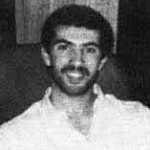
It is a closed circuit then – of racial stereotype, perceived fear, death, exoneration, return to duty. It is in effect ‘a licence to kill’. The words (permis de tuer) are those of the mother of Youssef Khaïf outside a French court in 2001, when, following a ten-year legal fight, the officer who had shot dead Khaïf, her 23-year-old activist son, during a chase in Mantes-la-Jolie, was acquitted.[2]

